Features of wall insulation outside a private house

The Russian climatic situation, perhaps, is not so different from the situation in other northern countries. But people living in private housing are not up to abstract encyclopedic research. They need high-quality insulation of their homes so as not to suffer from the cold and not lose too much money when buying fuel for stoves or paying for electric heating.

Pros and cons of outdoor insulation
First of all, you need to figure out - is it really necessary, this is the very facade insulation. It always has at least one positive side, it is that the entire thickness of the wall is insulated. The exclusion of heating of its individual parts initially solves the problem with the formation of condensate inside, with "crying" surfaces in the house. Engineers claim (and reviews confirm their assessment) that insulating buildings from the outside allows you to leave the internal space intact. It will not be spent on very thick and not always beautiful looking designs.


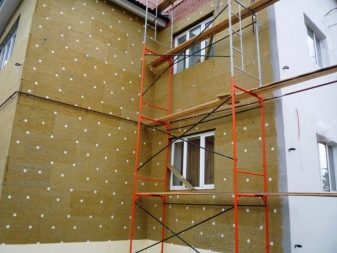
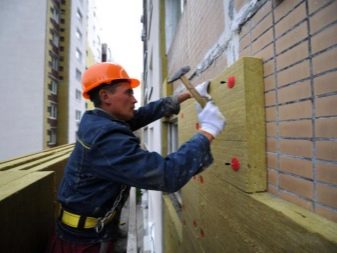
Before you rejoice and look for SNiP suitable for a particular home, you should pay attention to the potential disadvantages. Obviously, such work will not work in any weather: rain and wind, and sometimes cold, do not allow you to do it efficiently. The total cost of such a finish turns out to be very high, for many people such costs are unbearable. The severity of external conditions limits the choice of insulation materials or forces the creation of protective structures. And besides, if the house is divided into two halves, there is no point in insulating only one of them from the outside, heat loss will decrease only slightly.

The ways
So, the insulation of the walls of a private house from the outside has much more pluses than minuses. But it is important to understand the features of individual materials and designs.
Houses made of expanded clay concrete blocks are insulated from the outside, most often with the help of:
- mineral wool;
- foam;
- its more modern counterpart - penoplex.

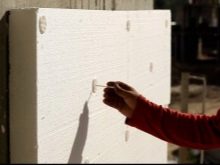

The first option is preferable due to zero fire hazard and low cost. But the problem is that the affordable price is largely negated by the need to organize a protective screen. Polyfoam is lightweight, also belongs to the budgetary group of materials, and it can be mounted quickly.
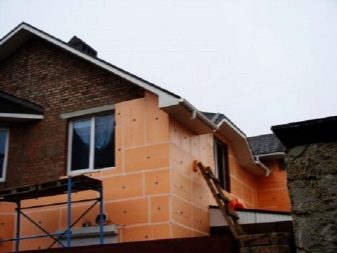

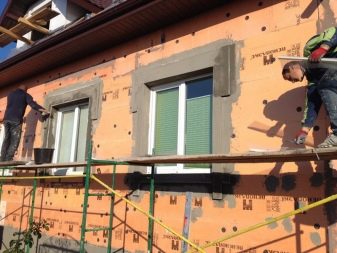

At the same time, we must not forget about the danger of damage to the insulation layer by rodents, about fire risks. Penoplex is environmentally friendly, mice and rats will not be delighted with it. Disadvantages - hefty high cost and lack of micro-ventilation.
Quite often, people are faced with the problem of insulating the external facades of old panel houses. The main condition for high-quality thermal protection is such a device in which the vapor permeability increases from the living space to the street. There is no need to remove the outer skin of the dwelling, a number of technologies have been worked out that allow you to mount thermal insulation on top of it.

When choosing a suitable option, it is worth giving preference to solutions that do not overload the foundation and absorb the least amount of water. It is the significant severity and the finding of the dew point inside the hygroscopic thermal protection that give the owners of panel buildings the most problems.

Insulation of houses in the country for winter living is very important.
It is imperative to provide thermal protection:
- internal floors on the ground;
- floors of the first tier (if the foundation is not insulated);
- external walls;
- cold attic floor or mansard roof.

It makes no sense to single out any one of these elements, even as important as walls. If at least one area is not insulated, all other work can be considered wasted, as well as the money spent on them. The walls must be equipped with waterproofing and vapor barrier; when choosing mineral or ecological wool for insulation, it is required to leave a ventilated gap of 50-100 mm. Insulation of a panel house from the outside has its own specifics. The slightest irregularities are supposed to be removed, and ideally - to level them with a primer.

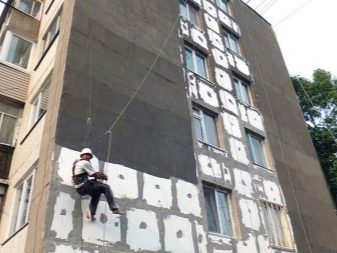

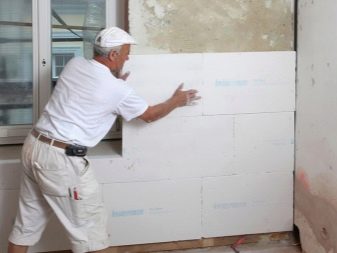
If splitting paint is found, shedding of a different finish - all these layers are removed, even if the technology does not require such manipulation. In most cases, foam is used for external thermal protection of concrete walls, and the most reliable way of fixing it is the connection of glue and dowels. Work is carried out from the bottom up, at the lowest point a special bar is mounted, designed to prevent material from slipping. For your information: it is allowed to replace the dowels with plastic nails. Regardless of the fastening method, you need to carefully monitor the resulting gaps.

Warming of the junction of the wall to the roof deserves a separate discussion. This work is done traditionally with the help of stone wool, but lovers of modern technologies are better off focusing on Macroflex foam. In many cases, a steel bonding apron is formed. Whether it is needed in a specific house, on a specific wall - only trained specialists can find out. The insulation of the junctions is too difficult to be done properly by the owners of the house themselves or by accidentally found free masters.
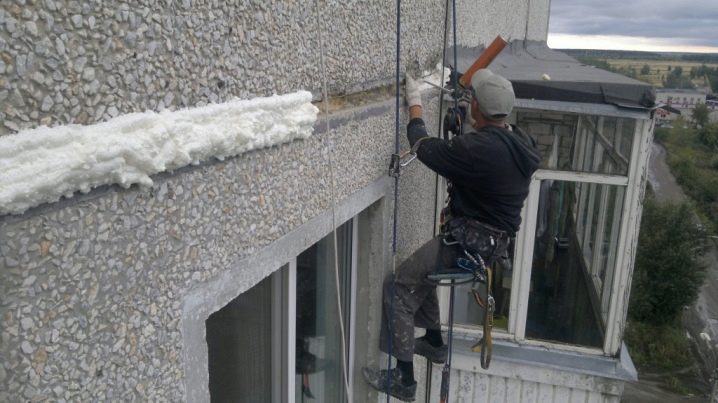
Types of materials
External wall insulation of private houses can be made with a variety of materials. It will not work to use sawdust for this purpose, because such protection is always bulk. Strictly speaking, the sawdust layer is laid inside the wall and must be quite thick. Mostly this solution is used by the owners of frame and bulk buildings. But it should be considered in the very last place: even lime-supplemented wood waste is too prone to caking and getting wet.
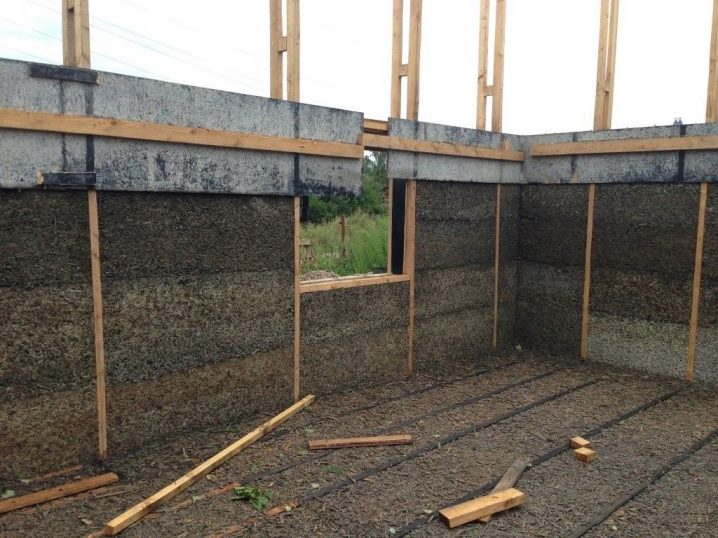
For the construction of private houses, many people prefer to use foam concrete or aerated concrete; these two materials are stronger than wood. However, they need to be insulated according to a special scheme. Preferred solutions are polyurethane foam and mineral wool. The second material is the cheapest and is not subject to ignition, it is easy to work with it. Extraneous sounds are extinguished in the cotton layer, and they will annoy the tenants less.

Some developers use sawdust concrete, which is excellent for saving heat in frame houses. To make this material with your own hands, you can use large sawdust and calibration shavings obtained on woodworking machines. An indispensable component of the mixture is liquid glass. Carrying out reinforcing structures through the walls will help to avoid stratification of the mixture into separate components. It is recommended to drill holes for them immediately.

Perlite is used not so much outside as in the composition of multilayer walls. A prerequisite for the reliable service of this material is vapor barrier on the inside and high-quality waterproofing on the outside. To reduce the risk of water saturation and loss of thermal qualities, perlite is usually mixed in equal proportions with cement and expanded clay. If you need insulation that has really outstanding characteristics, it is difficult to find something more practical than basalt wool.Since it is impossible to work on the facade in its pure form, you will have to buy special plates.

Like other waddings, this solution increases not only thermal insulation, but also sound insulation. This circumstance is very important for private houses located near highways, railways, airports and industrial facilities. It should be borne in mind that not every glue is suitable for joining such boards to a wood base. Installation can be done wet or dry. In the second case, it is required to purchase dowels with extended caps.
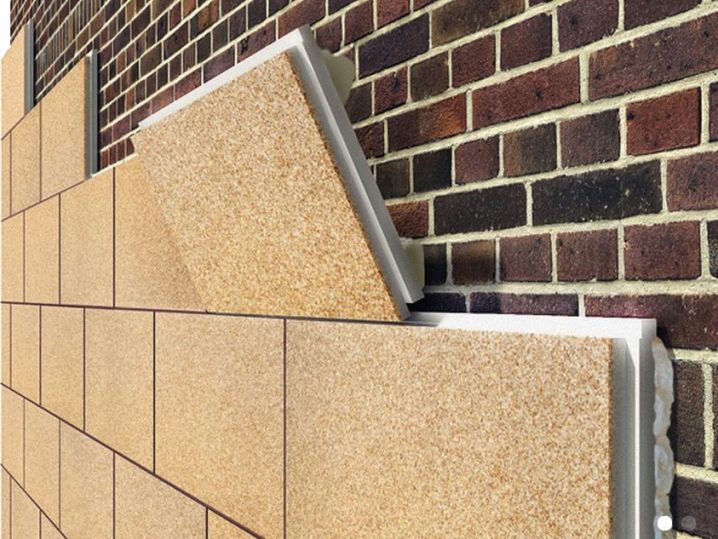
For finishing the facade of a private house, it is permissible to use only basalt slabs with a specific mass of at least 90 kg per 1 cubic meter. m. As an additional thermal protection, they sometimes use reeds; everyone will be able to prepare the necessary raw materials and prepare them for work. The stems will have to be laid as tightly as possible so that there are as few loopholes as possible for cold air between them. The problem of fire hazard is solved by impregnation with a fire retardant or bischofite, these substances increase the fire resistance of the reed mass to the G1 level (spontaneous extinguishing when heating is stopped).

Polyurethane foam
If there is no particular desire to use natural materials, you can safely use PPU panels. The advantage of this solution is the combination of thermal and acoustic protection of the living space. Polyurethane foam does not allow water to pass through, and therefore there is no need for an additional waterproofing layer, and cost savings are achieved. Polyurethane foam easily adheres to the base material and therefore it turns out to be quite simple to work with it. Weaknesses should also be taken into account - the high price of the coating, its instability under the influence of ultraviolet radiation.

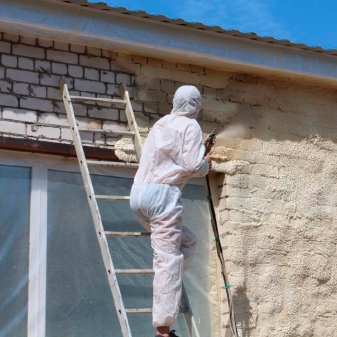
Siding
In some cases, the cake, finished outside with siding, also becomes an insulating structure. The metal itself, no matter how beautiful it looks, allows a lot of heat to pass through. And even vinyl designs are not much better at this rate. Extruded polystyrene foam is often used for steel or vinyl lining, but its high flammability should be taken into account when choosing it. Also, EPS and polystyrene sometimes cannot effectively dampen extraneous sounds.

Light insulation under the siding is provided by roll materials, including polyethylene foam with an outer foil coating. Foam concrete and aerated concrete heaters avoid interest from gnawing animals and guarantee full thermal protection. When using expanded polystyrene, you first need to cut the sheets in accordance with the exact dimensions. Provided that the crate is planned specifically for specific sheets, the number of cut parts will be minimal. If mineral wool is installed, it is recommended to leave it untwisted for 60-90 minutes before cutting or filling the frame, then the result will be better and more stable.




Mineral wool
Minvata is good in that it does not interfere with ventilation in the room through the walls.
It is also able to close the unevenness of the relief on:
- tree;
- brick;
- stone.
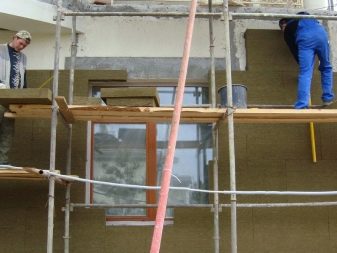
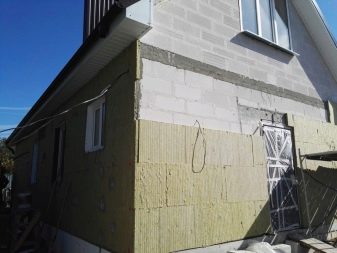


In this regard, subsequent finishing is simplified, and the rough surface becomes as smooth as possible. When working on the outside of the walls, in contrast to internal thermal insulation, the problem of formaldehyde emission completely disappears. Important: if the relative humidity of the air exceeds 85%, it is unacceptable to put mineral wool in any form.

Fastening is usually done with anchors, and a brick wall is placed on top of them. When insulating an already in use house, metal structures cannot be left inside the walls, they can rust very quickly.
Plaster
The insulating properties of gypsum plaster, even advertised by manufacturers, are not very impressive in practice. It can only be used as an auxiliary solution that enhances thermal protection carried out in other ways.The benefit lies in the fact that the plaster insulation boards look beautiful at the same time and reduce the need for other specialized materials.

As a result, the total wall thickness and the load it exerts on the foundation are noticeably reduced. To improve the thermal properties of a house, the most common dry mixture is suitable, to which perlite sand, pumice chips and other fillers of a fine fraction are added.
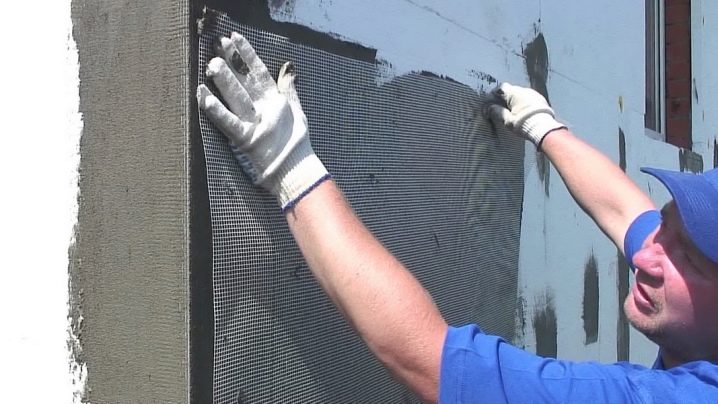
Styrofoam
The use of foam structures is excellent for providing thermal protection to buildings. This insulation functions smoothly at temperatures from -50 to +75 degrees. Among the different options for the material, it is worth paying attention to those that are impregnated with fire-resistant additives and filled with incombustible carbon dioxide. Bacteria and fungal organisms do not like polystyrene very much and practically do not settle in it. Cracked sections of the walls and holes will first have to be covered in order to get a decent result.




The range of insulation materials, of course, does not end with the listed materials. Quite a few people use polyurethane foam, which is no worse than pre-fabricated polyurethane foam panels. Excellent adhesion helps the liquid to penetrate immediately into the surface and provide reliable service for many years. For domestic purposes, low pressure cylinders are usually used: the quality of the reagent is not at all worse than in professional equipment, the only difference is that its output is slower. It should be noted that such technology cannot exclude until the end of the appearance of air bubbles in the foam layer, and a wall made of low-quality material is sometimes damaged by pressure.

Arbolit is used not only for the construction of houses, but also to improve the thermal qualities of already erected structures. This building material is almost entirely made of natural wood, which allows improving the thermal protection of stone and brick buildings. But it is important to understand that by itself it is easily blown through and gets wet, almost instantly turns out to be pierced by bridges of cold.

If the thickness of the wood concrete wall is 0.3 m or more, moreover, the laying is done correctly, there will be no special need for additional cover from the cold in the regions of central Russia. Wood concrete insulation is required in the regions of the Far North (over the entire surface). The points where the outward heat loss is most intense should be insulated in any area.
Clay is often used from natural materials for external thermal protection of walls (it is used both by itself and in mixtures with straw or sawdust). The undoubted advantages of such a solution are the low price and the absence of the risk of fire. Many people are attracted by the simplicity of the workflow.

Important: inattention to the proportions of the constituent mixtures can lead to their rapid loss of their valuable properties and to the stratification of the prepared thermal insulation. In order for the clay mass to stay on the surface of the wall, you will have to mount structures made of boards and durable cardboard.
Good results can be achieved with felt insulation. It is especially recommended for thermal protection of wooden houses. Laying can be carried out in several layers at once, which improves the quality of insulation, an affordable price allows you not to fear excessive costs in this case.
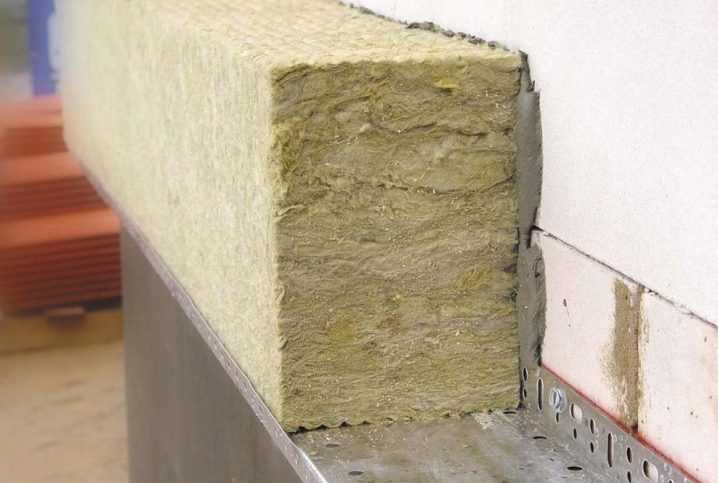
For your information: before ordering the material, it is worth checking with the professionals whether the felt insulation is suitable for a certain climatic zone.
Like wadded insulation, it dampens sounds penetrating from the outside, but you need to keep in mind possible problems:
- insufficient efficiency in large dwellings and in multi-storey buildings;
- unsuitability for insulation of stone and brick structures;
- relatively large thickness of the insulation being created;
- the need for careful alignment of the styling (every small fold is very harmful).

An alternative to natural materials is wall insulation with isolon.This insulation effectively reflects radiant infrared energy and has been recognized as a comfortable, safe product based on the results of a number of special tests. It is widely used in both private and apartment buildings. Izolon is sold in large-format rolls, so it is especially important to properly calculate the need for it. In general, approaches to calculating the need for insulation deserve special attention.

Calculation of material thickness
The calculation of the required thickness of penofol mats should be made in accordance with the standards enshrined in SNiP 2.04.14. This document, approved in 1988, is very difficult to understand and it is better to entrust working with it to professionals. Non-specialists can roughly estimate the required parameters using both online calculators and installed software. The first option is the simplest, but not always correct; it is difficult to take into account all the necessary nuances. The width of penofol canvases is always standard - 200 mm.
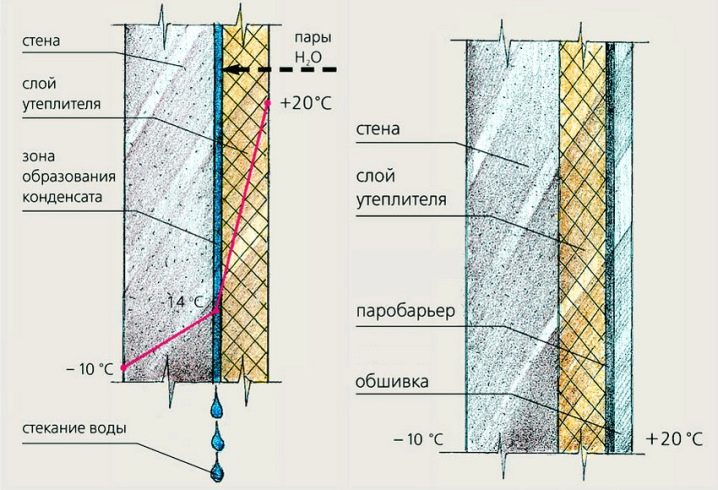
You should not strive to buy the thickest material possible, sometimes it will be more profitable to vary the desired number of foil layers. The double aluminum block is characterized by the highest thermal and acoustic properties. Optimal results (judging by the operating experience) are obtained by penofol 5 mm thick. And if the task is to achieve the highest thermal protection and sound insulation, without skimping on costs, it is worth choosing a centimeter design. A layer of 4-5 mm foam foam is enough to provide the same protection as when using 80-85 mm mineral wool, while the foil material does not pick up water.

Preparing the walls
The formation of lathing knots on wood is the simplest and easiest, in comparison with the processing of walls from other materials. In this case, the layout of the material should take into account the basic properties of wood: its high permeability to steam and the likelihood of fungal infection. The frame can be formed from a wooden bar or an aluminum profile. Provide special attachment points for heat-shielding material and lathing for front finishing. Roll insulation is attached to the walls from the timber on the slats.
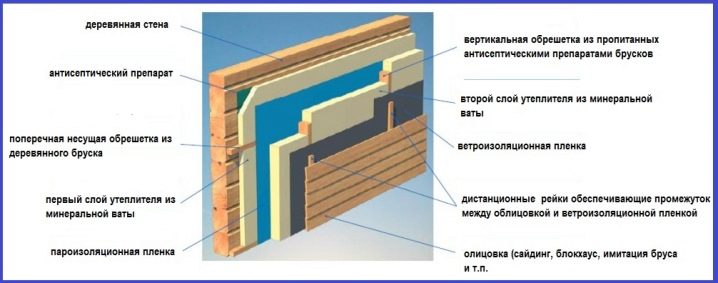
The double-layer thermal insulation coating must be mounted on a double batten (simple or supplemented with brackets). You can get a wooden frame using an electric jigsaw (if you choose the right blade), but it is recommended to cut aluminum structures with metal scissors. You should not try to speed up the process using angle grinders, it damages the anti-corrosion layer, reduces the shelf life of the thermal insulation. Screwing screws, bolts and self-tapping screws into wooden walls is best done with a screwdriver with a set of nozzles. The rechargeable version of the device is best suited, because then there will be no permanently interfering wire.

It is advisable to adjust wooden parts and drive in disc dowels with a hammer or a rubber mallet. If you need to mount membrane films, the best solution is to use a stapler with a set of staples. When preparing the lathing, each part of it is verified according to the building level: even minor deviations, imperceptible to the eye, often lead to improper operation of the insulation. Of course, even before starting the installation, the wooden walls must be impregnated with several layers of antiseptic composition. The use of a spray gun will help speed up this impregnation.
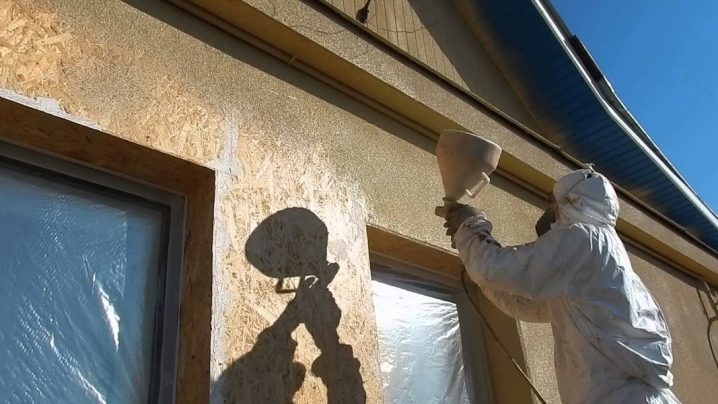
Installation steps
It is useful to consider step-by-step instructions on how to insulate the outer walls of gas silicate houses with your own hands. A prerequisite for the normal operation of most of these buildings is the installation of insulation material and protection from moisture from the outside. If the blocks are decorated with bricks, all protective materials are laid out in the gap between it and the gas silicate. Masonry 40-50 cm thick in central Russia, as a rule, does not require additional thermal insulation.But if constructions of 30 cm and thinner are used, this work becomes mandatory.

It is recommended not to use cement mortars, they form insufficiently tight seams that abundantly transmit heat to the outside world and frost to the inside of the building. It is much more correct to mount the blocks themselves using a special glue, which guarantees the most snug fit. At the same time, it reduces the likelihood of the formation of cold bridges.
When choosing which technology to insulate a gas silicate house, you should pay attention to:
- the number of floors in it;
- the use of windows and the glazing method;
- engineering communications;
- other structural and architectural details.

When insulating gas silicate, most professionals prefer slab structures based on stone wool or EPS. In third place in popularity are plaster-based facade insulation complexes. Styrofoam and traditional rock wool rolls are outsiders: there are no particular advantages over the leaders, but there are additional complications. Of the latest developments, it is worth paying attention to thermal panels, which are distinguished not only by excellent thermal protection, but also by a decent aesthetic appearance.
If any type of mineral wool is chosen for work, you will need:
- fasten the vertical lathing;
- lay waterproofing and vapor barrier (separate or combined in one material);
- mount the cotton itself and let it stand;
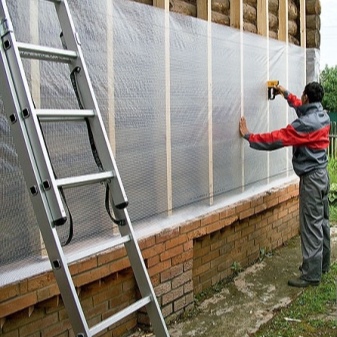

- put a second level of insulation from moisture and steam;
- put a reinforcing mesh;
- apply a primer and finishing material;
- paint the surface (if necessary).

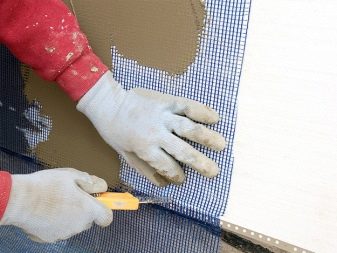
Installation of cotton slabs is carried out only with those adhesives that are indicated on the package. It is permissible to finish the walls above the insulation not with paint, but with siding. It is recommended to choose the densest variety of cotton wool to avoid premature caking and slipping. When installing the guides, they are mounted 10-15 mm closer to each other than the width of a single plate. This will allow the most dense filling of the frame and eliminate the slightest gaps.

Expanded polystyrene for insulating houses from the outside is even better than mineral wool. But its increased thermal insulation is devalued by its low mechanical strength. If significant loads will obviously act on the wall, it is better to refuse such a solution. Filling the joints between the boards is only permissible with polyurethane foam. External cladding with siding or the application of facade plaster will prevent the harmful effects of the weather and ultraviolet radiation.

External thermal insulation of a basement in a private house should be made only with materials that are as resistant to moisture as possible. Indeed, even the most reliable protective layers can be violated, and for obvious reasons, it will not be possible to eliminate this problem quickly and easily.
The basic requirements are as follows:
- carry out all work only in the dry season and in warm weather;
- be sure to remove the soil around the foundation of the house;
- apply moisture resistant mastic in a continuous layer;


- remove the insulation 50 cm above the upper line of the foundation;
- process the insulating layer remaining underground with an additional waterproofing coating;
- arrange drainage;
- decorate the base with decorative structures and materials

Useful Tips
Professionals insulate houses from reinforced concrete slabs as carefully as possible. This material, not only does it pass a lot of heat by itself, but it is also designed in such a way that the thermal efficiency is significantly reduced. The developers strive to make reinforced concrete products light and compact by construction standards, therefore it is recommended to take into account information from the accompanying documentation.

A common mistake is to use the cheapest foam grade; they are too short-lived and do not allow even for a lifetime to provide high-quality insulation.For your information: before insulating basements, it is recommended to first provide high-quality ventilation in full.
Heaters with foil are a fairly new and practical solution that combines three valuable properties at once:
- restraining the flow of heat;
- blocking the soaking of the insulating layer and its substrate;
- suppression of external sounds.

Modern options for foil materials allow you to simultaneously insulate the wall, and partitions in the house, and pipelines, and even auxiliary buildings. Mineral wool, covered with foil on one side, is recommended for use mainly in non-residential premises. Regardless of the type of material, it is attached in such a way that the reflector "looks" into the building.

It is supposed to leave a gap of 20 mm from the outer finish to the insulation layer in order to strengthen the thermal insulation with an air gap. On the first floors, it is imperative to insulate not only the walls, but also the floor.
Industrial waste is quite widespread in the thermal protection of private houses; many people use metallurgical slag for this purpose. Wastes from nickel and copper smelting are in demand more than others, since they are chemically resistant, and the tensile strength starts from 120 MPa. Using slags with a specific gravity of less than 1000 kg per 1 cu. m, it is necessary to create a heat-shielding layer of 0.3 m. Most often, blast-furnace waste is used to insulate floors, not walls.

Sometimes you can hear statements about cardboard insulation. Theoretically, this is possible, but in practice there are a lot of problems and difficulties with this. The only option that meets the necessary requirements is corrugated cardboard, which has air gaps that retain heat.
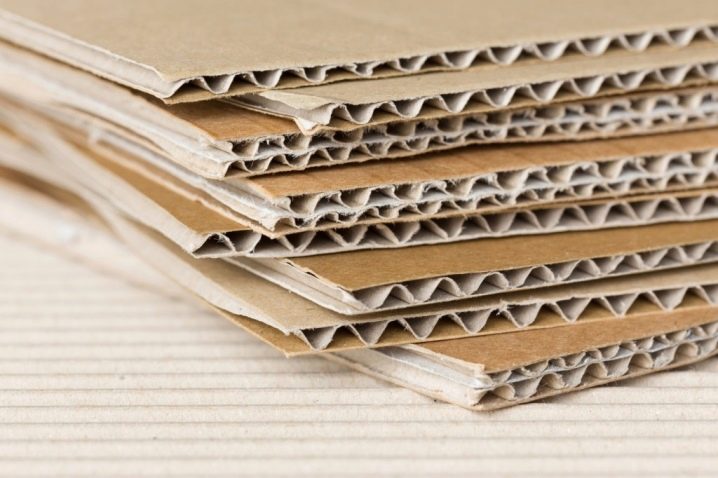
The paper itself, even if it is very thick, protects only from the wind. Corrugated material is supposed to be laid in several layers with the obligatory gluing of the joints. The fewer connections between individual layers, the better.
The best grades of cardboard:
- hygroscopic;
- smell very bad when wet;
- conduct too much heat compared to other options.

It is much better to use kraft paper: it is also thin, but much stronger than cardboard. Such a coating effectively protects the main insulation from the wind (in most cases, mineral wool is located at the bottom). In terms of thermal protection parameters, kraft paper is identical to natural wood, it also passes steam well.
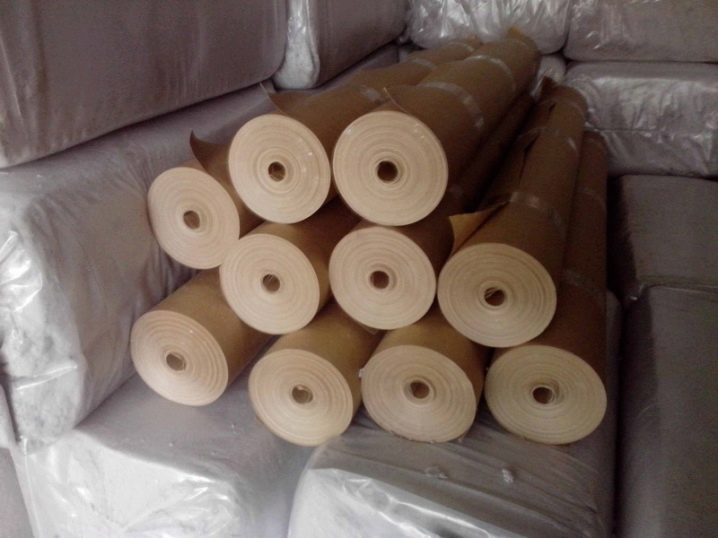
At least the fact that products for it are produced on an industrial scale and even using different technologies speaks of the merits of insulation with ecological wool. The dry method of applying cellulose involves filling the granules into the allotted niches. It is important to take into account that ecowool is produced in the form of a fine fraction and can "dust". A number of reagents contained in this insulation are capable of provoking local allergic reactions. Therefore, all work is carried out using rubber or fabric gloves and respirators (gas masks), and a layer of ecological wool is surrounded by a barrier made of kraft paper (it cannot be replaced with cardboard!).
For information on how to insulate the walls of the house outside with your own hands, see the next video.
If there is a material opportunity, it is better to call professionals with a special machine and order water-glue treatment. It is not only safer for health, but also more effective and reliable over time.













The comment was sent successfully.